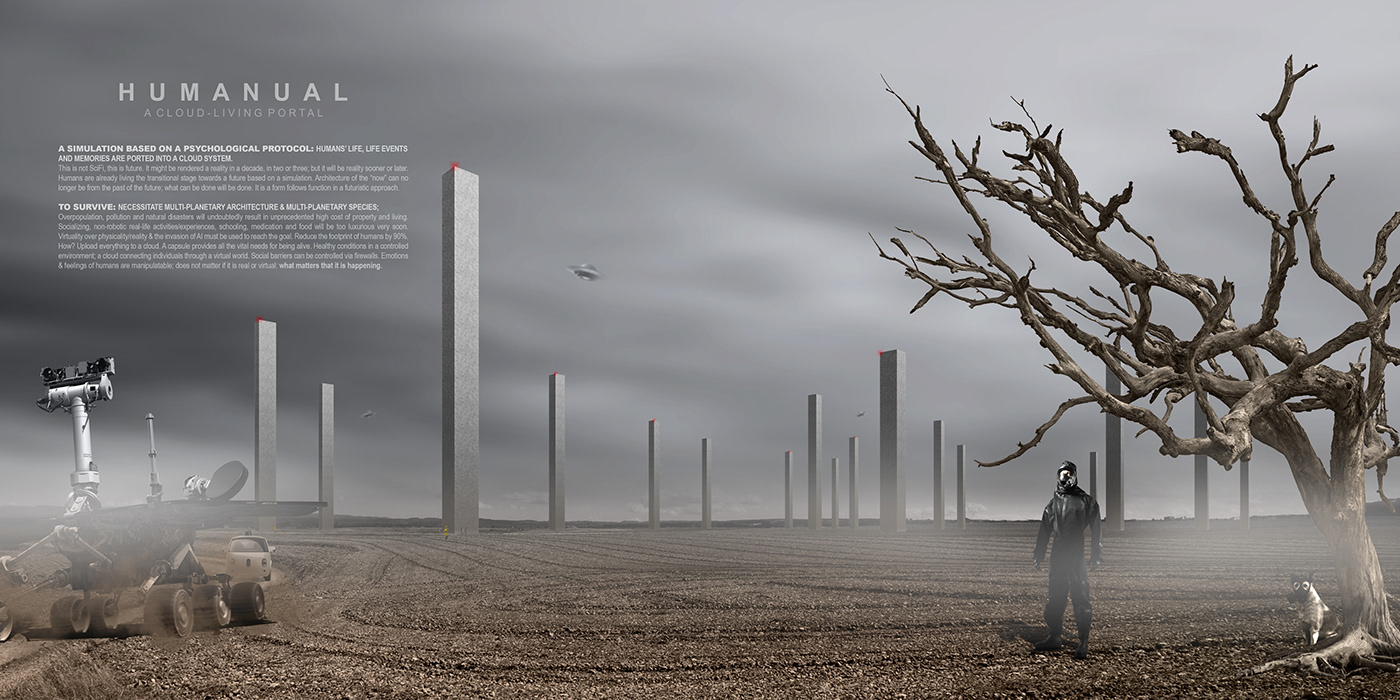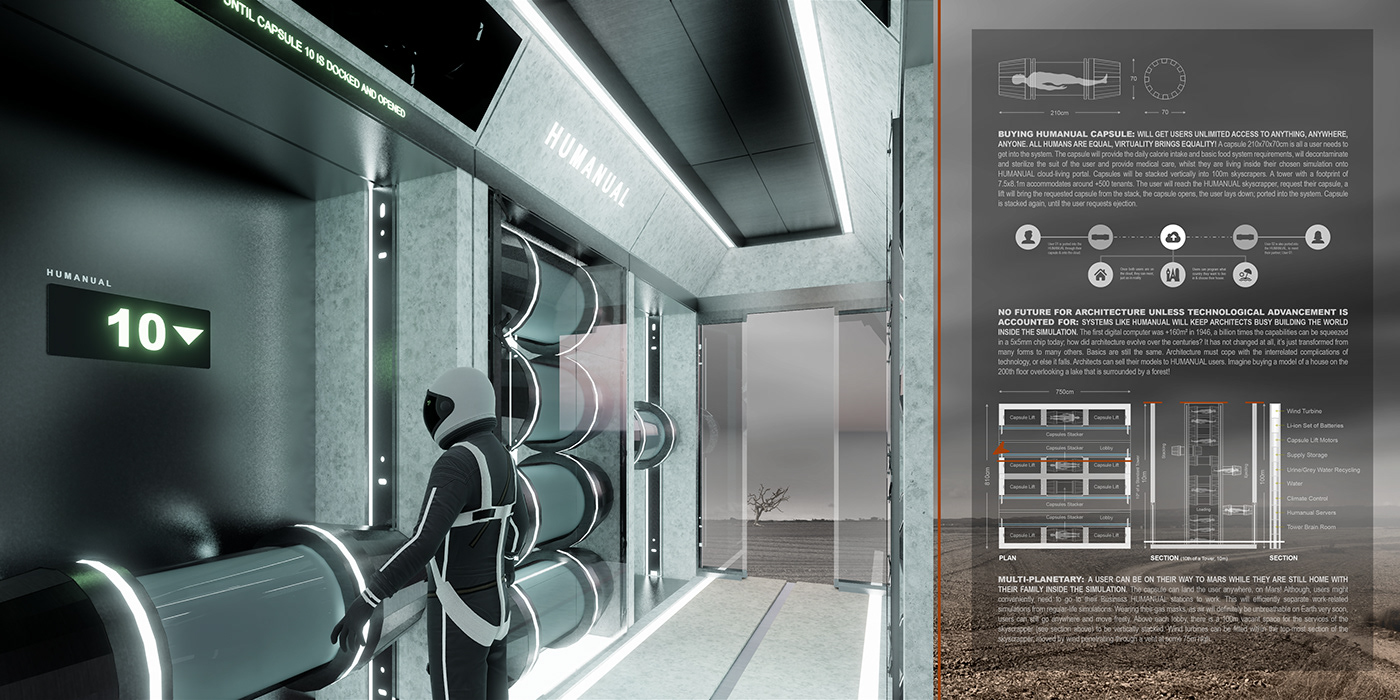

H U M A N U A L
A CLOUD-LIVING PORTAL
A CLOUD-LIVING PORTAL
A SIMULATION BASED ON A PSYCHOLOGICAL PROTOCOL:
HUMANS’ LIFE, LIFE EVENTS AND MEMORIES ARE PORTED INTO A CLOUD SYSTEM.
This is not SciFi, this is future. It might be rendered a reality in a decade, in two or three; but it will be reality sooner or later. Humans are already living the transitional stage towards a future based on a simulation. Architecture of the “now” can no longer be from the past of the future; what can be done will be done. It is a form follows function in a futuristic approach.
TO SURVIVE:
NECESSITATE MULTI-PLANETARY ARCHITECTURE & MULTI-PLANETARY SPECIES;
Overpopulation, pollution and natural disasters will undoubtedly result in unprecedented high cost of property and living. Socializing, non-robotic real-life activities/experiences, schooling, medication and food will be too luxurious very soon. Virtuality over physicality/reality & the invasion of AI must be used to reach the goal. Reduce the footprint of humans by 90%. How? Upload everything to a cloud. A capsule provides all the vital needs for being alive. Healthy conditions in a controlled environment; a cloud connecting individuals through a virtual world. Social barriers can be controlled via firewalls. Emotions & feelings of humans are manipulatable; does not matter if it is real or virtual: what matters that it is happening.
BUYING HUMANUAL CAPSULE:
WILL GET USERS UNLIMITED ACCESS TO ANYTHING, ANYWHERE, ANYONE. ALL HUMANS ARE EQUAL, VIRTUALITY BRINGS EQUALITY!
A capsule 210x70x70cm is all a user needs to get into the system. The capsule will provide the daily calorie intake and basic food system requirements, will decontaminate and sterilize the suit of the user and provide medical care, whilst they are living inside their chosen simulation onto HUMANUAL cloud-living portal. Capsules will be stacked vertically into 100m skyscrapers. A tower with a footprint of 7.5x8.1m accommodates around +500 tenants. The user will reach the HUMANUAL skyscrapper, request their capsule, a lift will bring the requested capsule from the stack, the capsule opens, the user lays down; ported into the system. Capsule is stacked again, until the user requests ejection.
NO FUTURE FOR ARCHITECTURE UNLESS TECHNOLOGICAL ADVANCEMENT IS ACCOUNTED FOR:
SYSTEMS LIKE HUMANUAL WILL KEEP ARCHITECTS BUSY BUILDING THE WORLD INSIDE THE SIMULATION.
The first digital computer was +160m² in 1946, a billion times the capabilities can be squeezed in a 5x5mm chip today; how did architecture evolve over the centuries? It has not changed at all, it’s just transformed from many forms to many others. Basics are still the same. Architecture must cope with the interrelated complications of technology, or else it falls. Architects can sell their models to HUMANUAL users. Imagine buying a model of a house on the 200th floor overlooking a lake that is surrounded by a forest!
MULTI-PLANETARY: A USER CAN BE ON THEIR WAY TO MARS WHILE THEY ARE STILL HOME WITH THEIR FAMILY INSIDE THE SIMULATION.
The capsule can land the user anywhere, on Mars! Although, users might conveniently need to go to their Business HUMANUAL stations to work. This will efficiently separate work-related simulations from regular-life simulations. Wearing their gas masks, as air will definitely be unbreathable on Earth very soon, users can still go anywhere and move freely. Above each lobby, there is a 100m vacant space for the services of the skyscrapper (see section above) to be vertically stacked. Wind turbines can be fitted within the top-most section of the skyscrapper, moved by wind penetrating through a vent at some 75m high.
My vision for the future of architecture
Ahmad Alkattan
alkattan@outlook.com
February 2019




